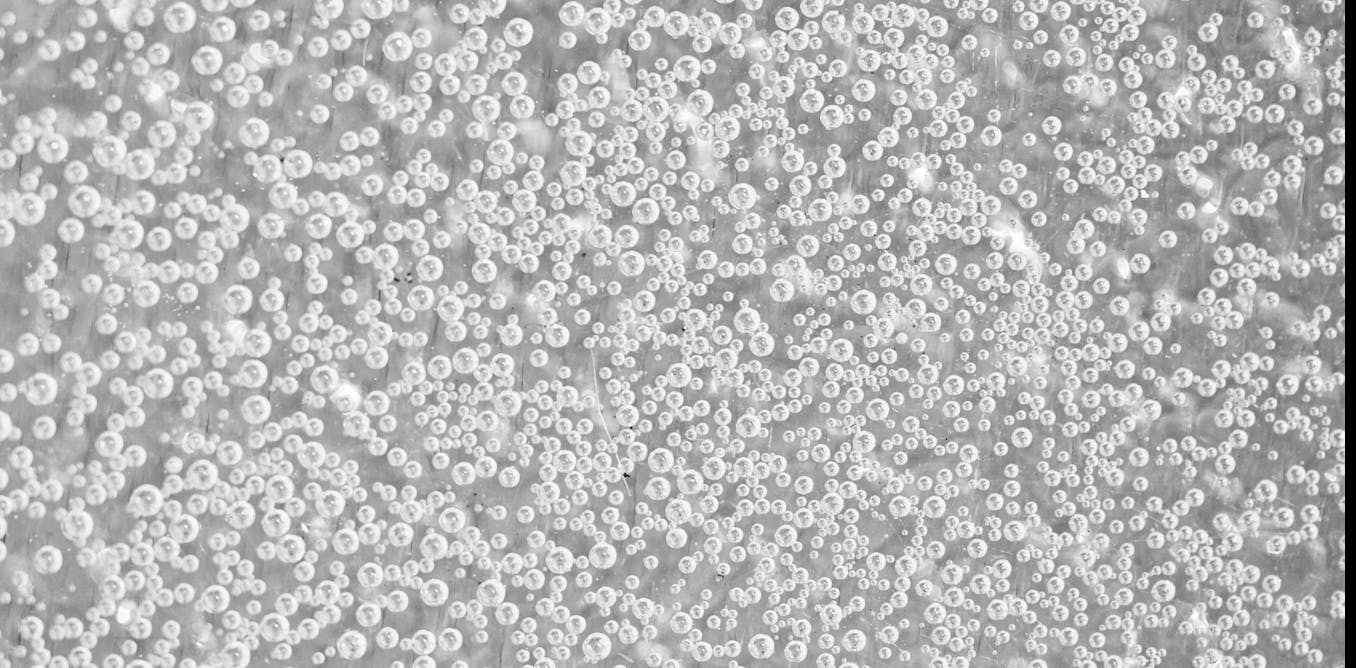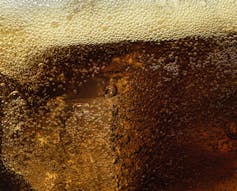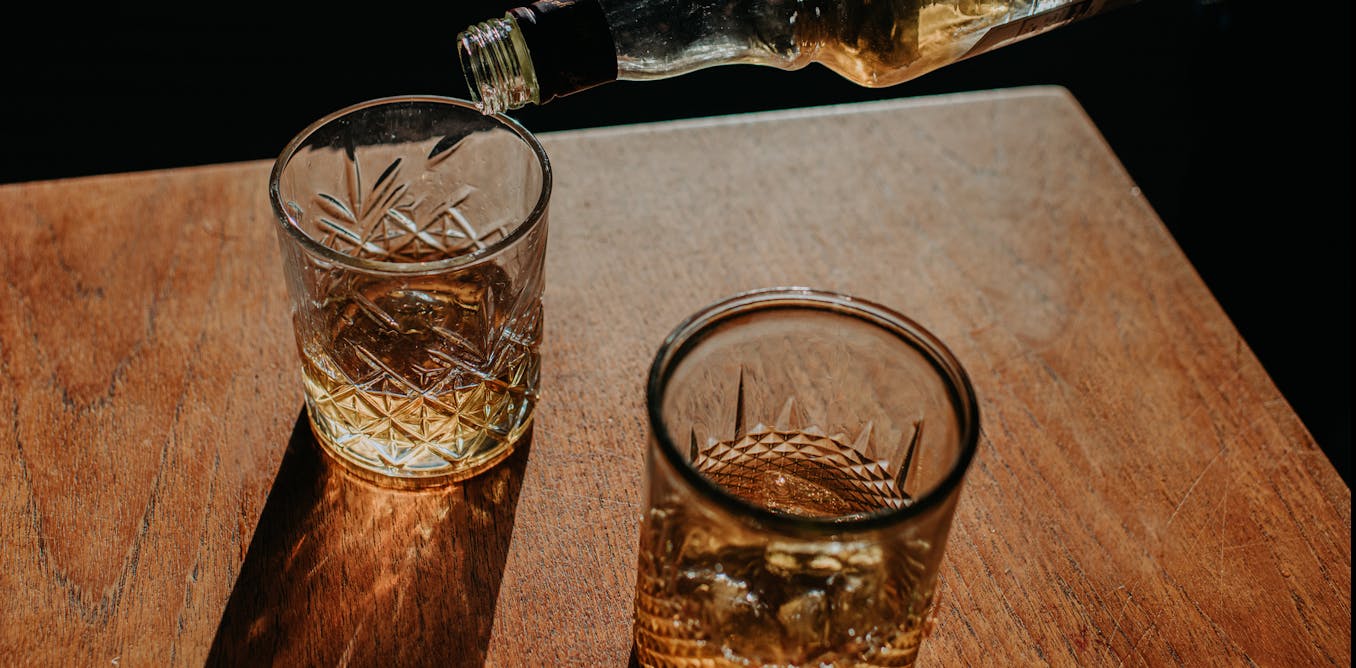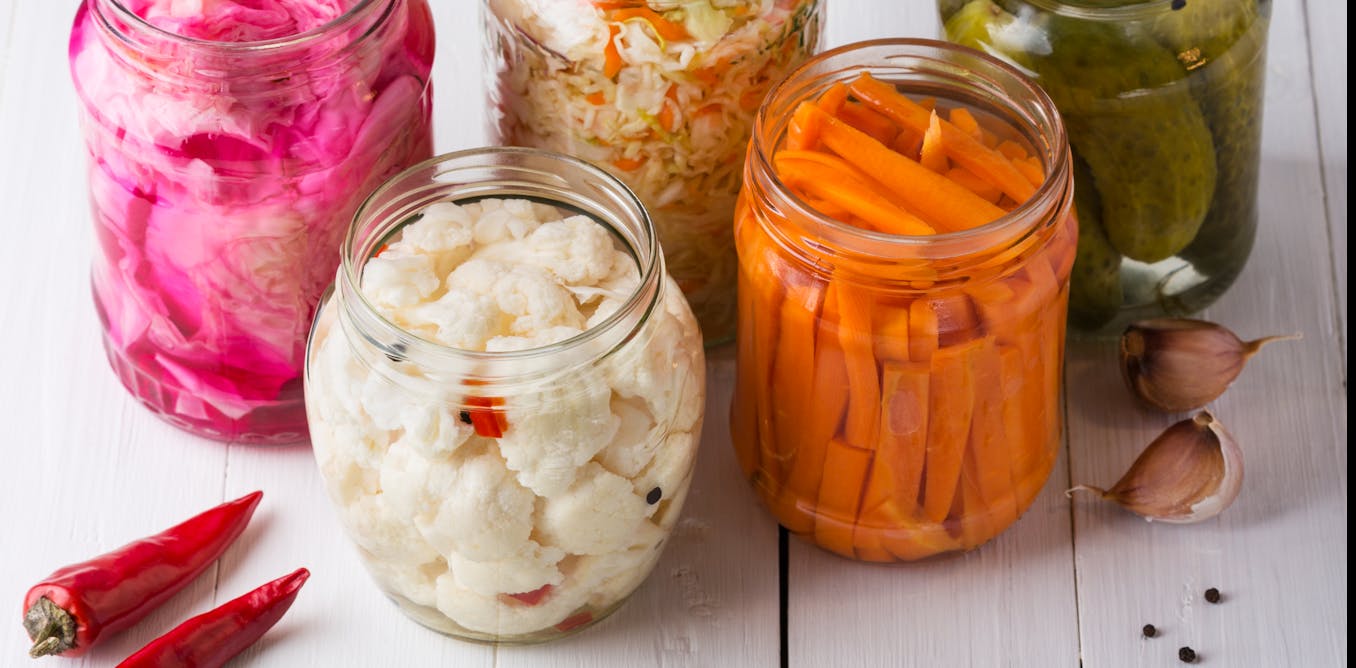
The bubbly chemistry behind carbonated beverages
Ever wonder how soda manufacturers get the bubbles and fizz inside the can? A chemist explains some of the science behind the carbonation process. Hint − it involves carbon.
Aug. 14, 2023 • 7 min • Source
Many people love the refreshing effervescence of a soda, champagne, beer or sparkling water. When you take a sip, the gas bubbles in the beverage burst, and the released gas tickles your nose. But have you ever wondered how carbonation actually works?
I’m a professor who teaches classes in chemistry and fermentation and a carbonated beverage enthusiast and home brewer myself. While the basic process of carbonation is relatively simple, a variety of factors – from temperature to surface tension – can affect the taste and quality of beverages.
Dissolving carbon dioxide
Carbonation involves dissolving the colorless and odorless carbon dioxide – CO₂ – gas into a liquid. When carbon dioxide is added to a sealed bottle or can containing water, the pressure in the bottle or can increases, and the carbon dioxide dissolves into the liquid.
The CO₂ above the liquid and the CO₂ dissolved in the liquid reach chemical equilibrium . Chemical equilibrium essentially means the rate that CO₂ dissolves into the liquid is equal to the rate that CO₂ is released from the liquid. It’s based on the amounts of CO₂ both in the air and in the liquid.
Some of the dissolved CO₂ reacts with the water to form carbonic acid, which has a chemical formula of H₂CO₃. So once some of the dissolved CO₂ converts to H₂CO₃, more CO₂ from the air above can dissolve into the liquid and reestablish chemical equilibrium.
When you open a bottle or can, the pressure above the carbonated liquid drops to match the pressure outside of the bottle or can. The pressure release results in a hissing sound, and you see bubbles rising in the liquid as the H₂CO₃ converts back to CO₂ and that gas escapes to the surface . The carbonic acid in the beverage is what makes it taste a little sour .
A colder drink is a bubblier one

Another important factor influencing carbonation is temperature. Most gases, including carbon dioxide, do not dissolve well in liquids as the temperature of the liquid rises . That’s why carbonated drinks go flat if you leave them out at room temperature.
Conversely, if you place your favorite carbonated beverage in the refrigerator and allow it to get cold, more dissolved carbon dioxide will stay in the beverage while it’s still sealed. When you open the chilled bottle or can, the liquid is more bubbly because there was more dissolved carbon dioxide in the cold beverage.
Surface tension and fizziness
One final important factor for carbonation is the surface tension of the liquid. A liquid’s surface tension is determined by how strongly the liquid’s molecules interact with each other . For most beverages, those molecules are water molecules, but diet soft drinks have artificial sweeteners dissolved in them. These sweeteners can weaken the interactions between the water molecules, creating a lower surface tension. A lower surface tension means the carbon dioxide bubbles form faster and last longer .
This is why it takes slightly longer to be served a Diet Coke on ice, a problem you might notice on a plane. The lower surface tension from the artificial sweetener means there’s more fizz, and for longer, compared with other soft drinks. The flight attendants then have to wait for the bubbles in the cup to break before they can fill the cup with more Diet Coke.
Surface tension is also why Diet Coke works so well in the famous Mentos experiment , during which you drop Mentos candies into 2-liter Diet Coke bottles. The candy helps to weaken the interactions between the water molecules and the CO₂ molecules, lowering the surface tension and allowing for an easier release of CO₂ molecules. A bubbling “geyser” of Diet Coke rises fast above the 2-liter bottle as the CO₂ molecules quickly form on the candy’s surfaces and force the Diet Coke out of the bottle.
Getting the bubbles into a beverage
In an effort to make water similar to that from mineral springs, the carbonation process was invented by Joseph Priestley in England in the 1760s and commercialized by Jacob Schweppe – recognize the name? – in Switzerland in the 1780s . Priestley reacted chalk with sulfuric acid, producing CO₂, and he hung a water-filled container over the reaction to infuse the water with CO₂ .
Today, most commercial beers, soft drinks, seltzers and sparkling waters are created by “forced” carbonation. This is when manufacturers directly inject carbon dioxide into the beverage under high carbon dioxide pressures .
A second common way to introduce carbon dioxide into a liquid is by fermentation . Champagne manufacturers and some small home beer brewers follow this method by sealing a sugar source and live yeast into their bottles. The yeast produce alcohol and carbon dioxide, and this carbon dioxide increases the pressure in the bottle, resulting in carbonated champagne and beer . But this process is not as controlled and can result in exploding bottles .
Larger brewers often capture CO₂ produced during a fermentation process and pump that gas into the tanks that contain beer to carbonate the beer. This is normally a controlled process that allows for known amounts of carbon dioxide to be introduced into the beverages for outstanding consistency.
Carbonation is a marriage between physics and chemistry – one that transforms ordinary liquids into effervescent treats. The next time you drink a carbonated beverage, take a moment to appreciate the science behind those dancing bubbles.
Michael W. Crowder receives funding from the National Institutes of Health to conduct research on antibiotic resistance and from Sazerac Corp and MineXAI to conduct research on the characterization of bourbon.


